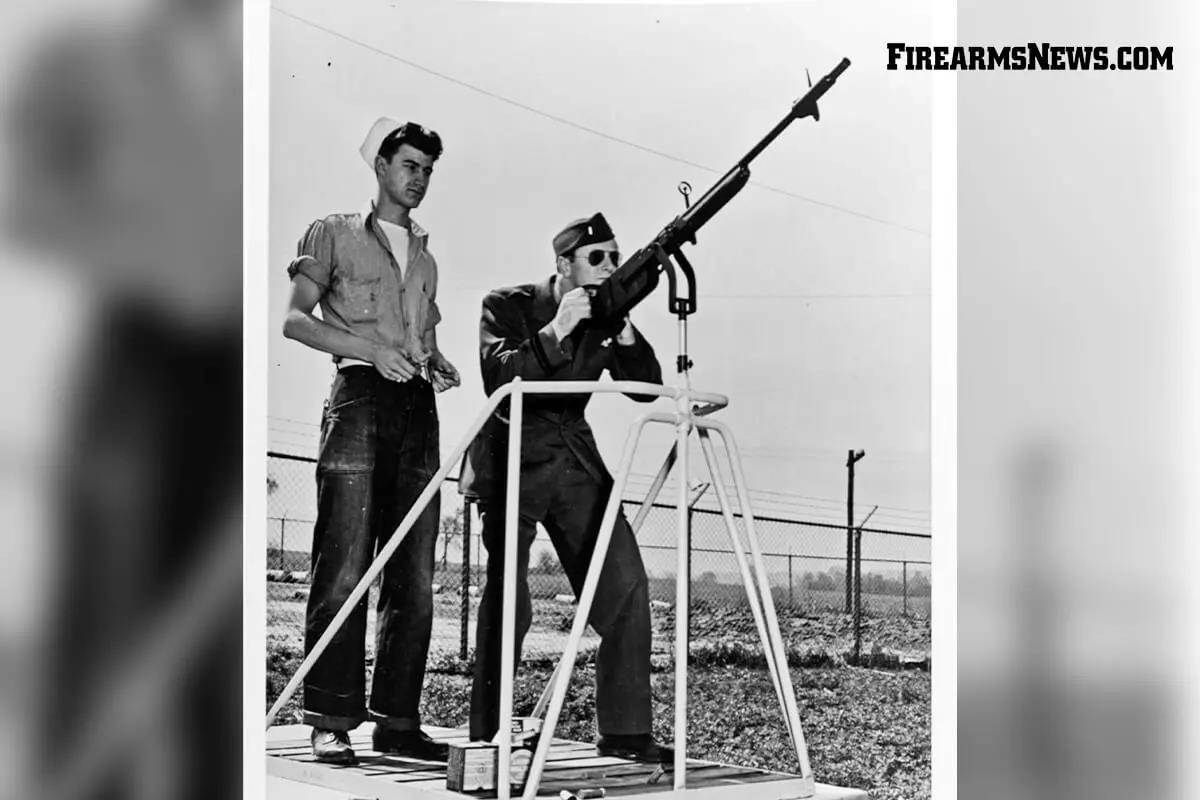
A Remington M11 shotgun set up on a mount for training in aerial gunnery. (NARA)
September 11, 2024
When most of us who are interested in World War II small arms think of combat shotguns in the hands of GIs, our first image will be of the Winchester 97 or Model 12 Trench Gun. Those who are a bit more knowledgeable might also be aware of the Stevens 520-30 and 620A Trench Guns. But, there are others including three models of self-loading riot guns.
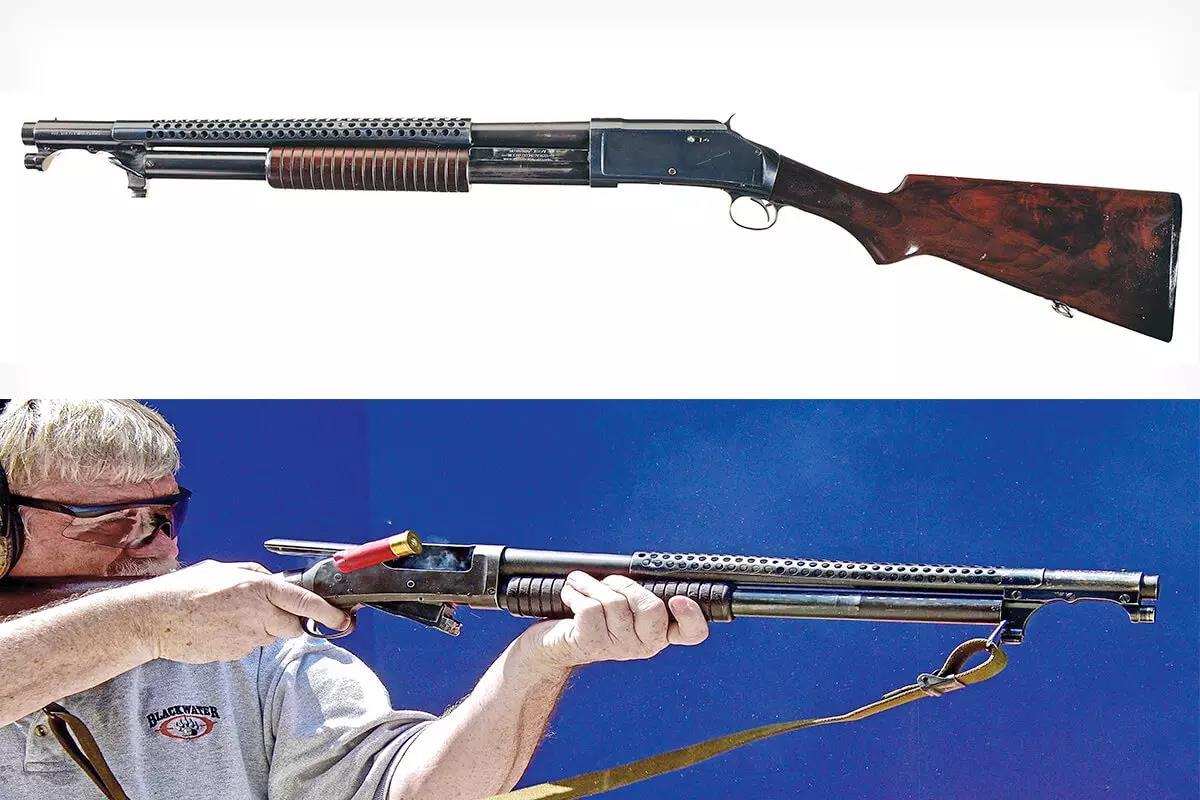
Actually, when discussing WWII self-loading military shotguns, a distinction must be drawn between those “riot guns” designed for close combat and those aerial training self-loaders used to train bomber crews and naval anti-air-craft crews. It is normally easy to determine the mission, for which a military self-loading shotgun was intended, by its barrel length: those used for gunnery training normally retaining their longer “sporting” barrels. However, the self-loading riot guns, which normally had 20-inch cylinder bore barrels, are more collectable; hence, some aerial gunnery training shotguns have been cut down and sold as the riot versions.
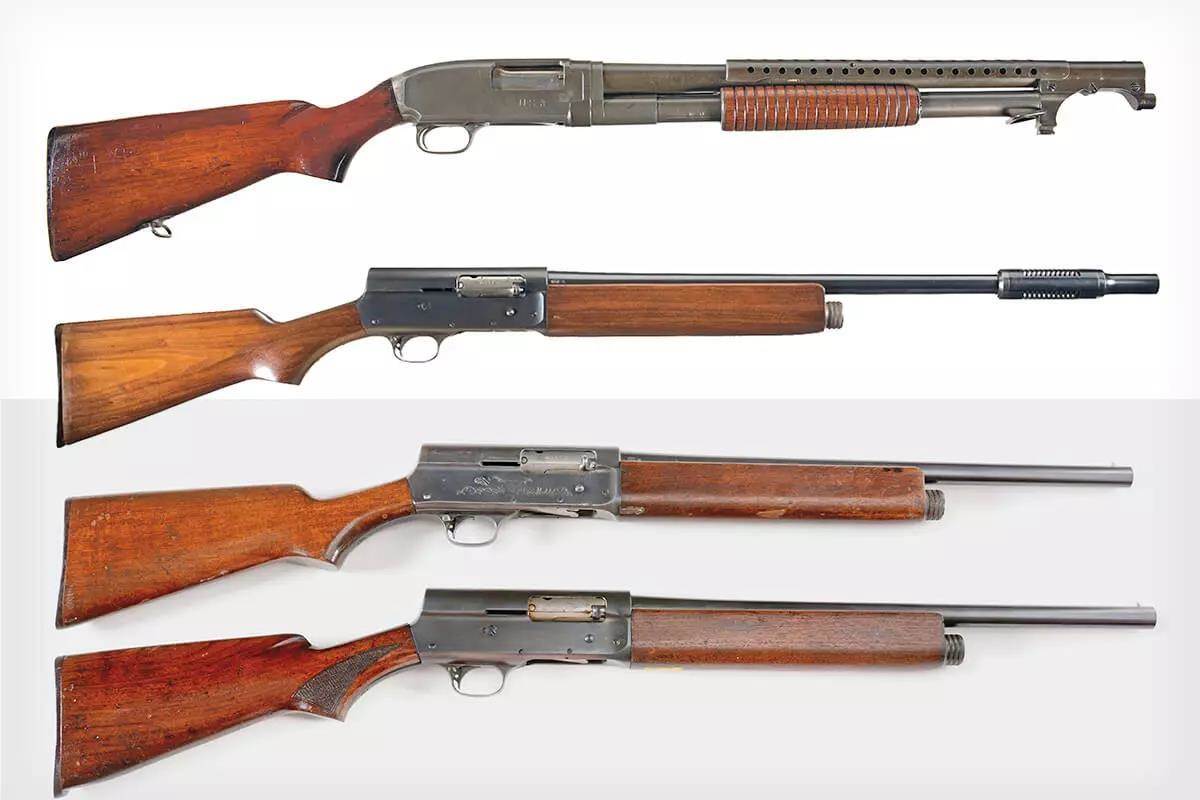
Before continuing the discussion of these military self-loading riot guns, let me digress a bit on the pros and cons of the self-loaders versus the more widely used military pump-action trench and riot guns. One consideration is that self-loading shotguns will normally be sensitive to the ammunition used. During the island battles in the Pacific, even the pump-action trench shotguns ran into feed problems with paper-cased cartridges that swelled in humid conditions. Self-loading shotguns will also be more sensitive to the load, which must be compatible for the settings of the shotgun’s gas system. The “gas system” for the pump trench, or riot gun, is the strong arm of the soldier pumping away. Although the self-loading combat shotguns used in WWII were sealed fairly well against foreign materials entering the action, still mud, dirt, sand, etc. could cause the shotgun to malfunction.
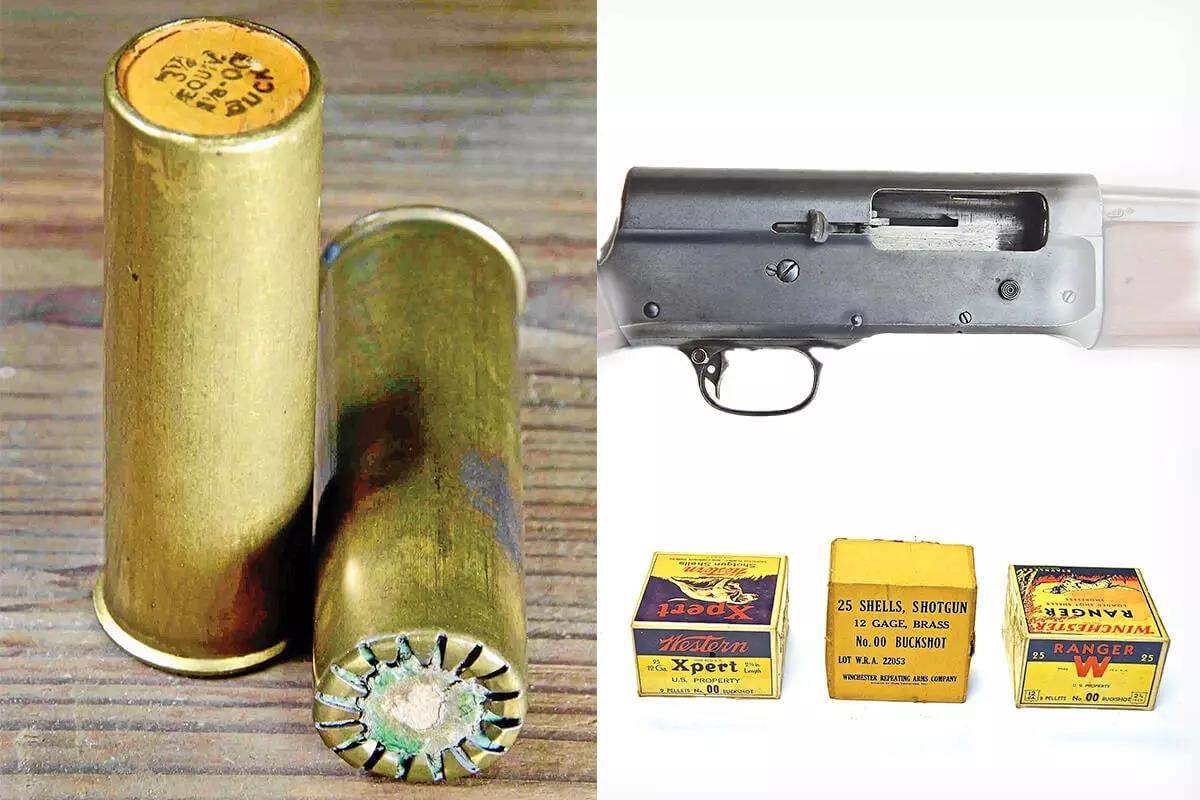
Tactically, the self-loading shotgun offered some advantages. In tight spaces, where operating the pump-action might be difficult, the self-loader does not require arm movement. Firing prone with a pump action usually requires the shooter to roll to the side to operate the pump action: not so with the self-loader. Those WWII auto-loading riot guns also allowed their users to send rounds of buckshot down range faster than a pump action, though with the Models 97 and 12 Trench or Riot Guns, the slam fire capability allowed rounds to be fired quickly. And, if one arm were injured the soldier or Marine could keep fighting with his self-loader.
Advertisement
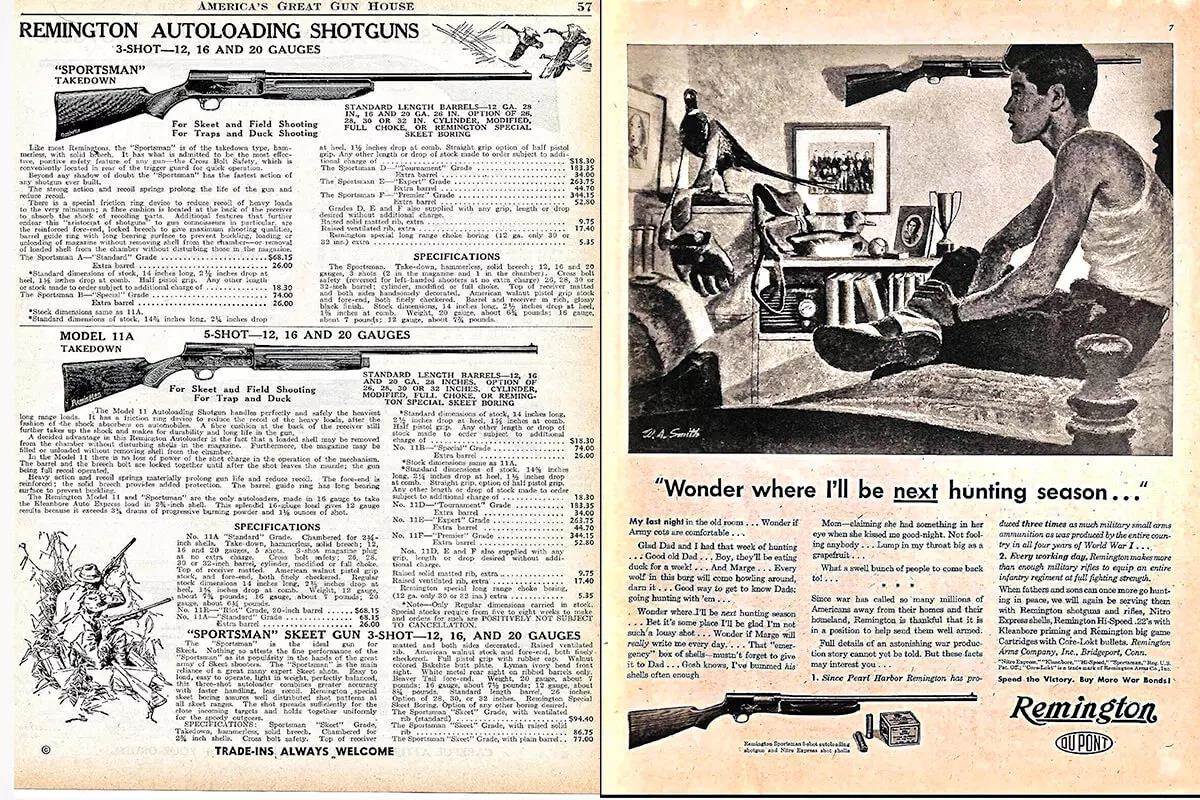
For the most part, GI self-loading riot guns in World War II were issued to different troops than those issued with Trench Guns. For example, the self-loaders were used in the USA to guard military or other critical installations. They were also used by Coast Guardsmen or others patrolling beaches. In combat zones, MPs or others who might guard POWs were sometimes issued with self-loading shotguns. As the self-loading shotguns were generally issued to troops not amidst the mud and blood of front-line combat, they would also be loaded with remaining stocks of paper cartridges, while brass shotguns shells designed to function reliably in adverse conditions could be sent to Marine and Army units in the Pacific.
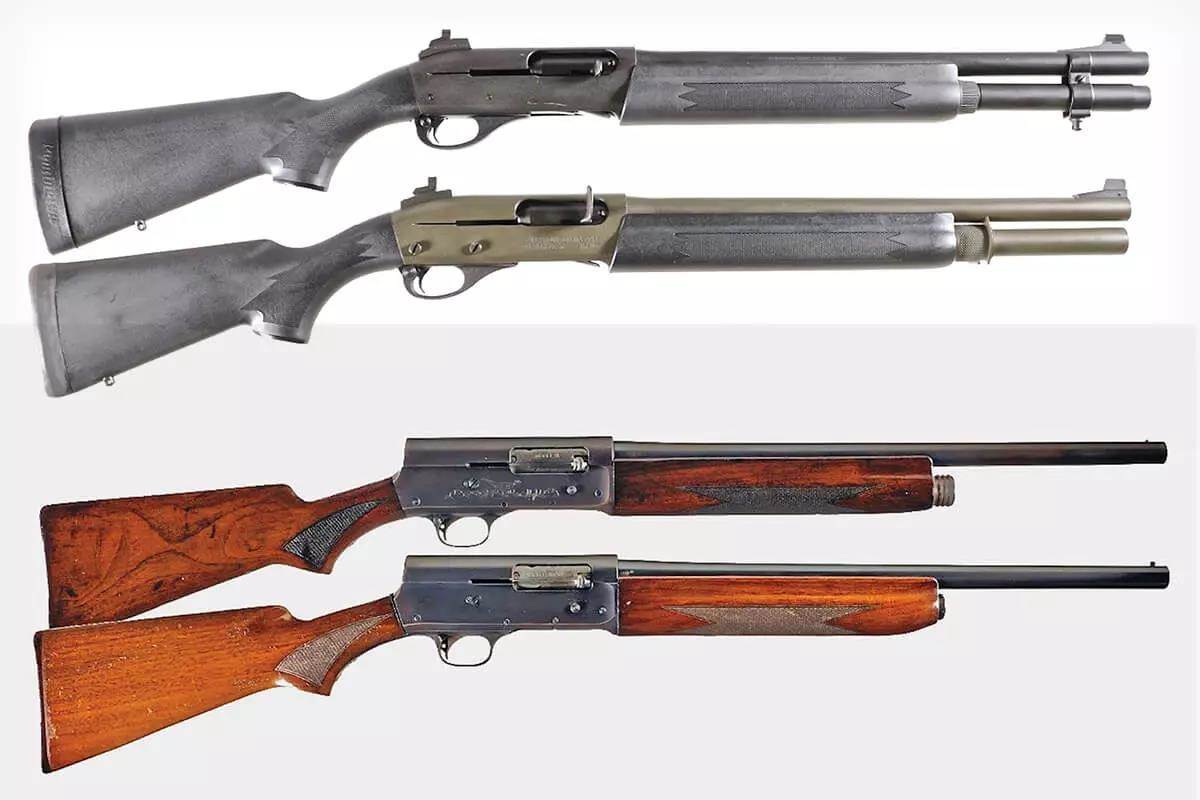
Although this article is concerned primarily with the self-loading riot shotguns, a bit should be said about the autoloaders used for aerial gunnery training, primarily to teach leading aerial targets. Remington Model 11 and Sportsman as well as Savage Model 720 self-loading shotguns were acquired with 20- and 26-inch barrels, the later for aerial gunnery, though there are photos indicating that at least some of the longer barreled shotguns were issued to defense plant guards and some others performing wartime security duties. According to Bruce Canfield in his excellent book Complete Guide to United States Military Combat Shotguns, the Air Corps preferred pump-action aerial gunnery training shotguns, while the Navy preferred the auto-loading variety. Initially, the training was carried out using the shotguns from the shoulder, but later to make the training more realistic, shotguns were affixed to mounts similar to those used on naval ships.
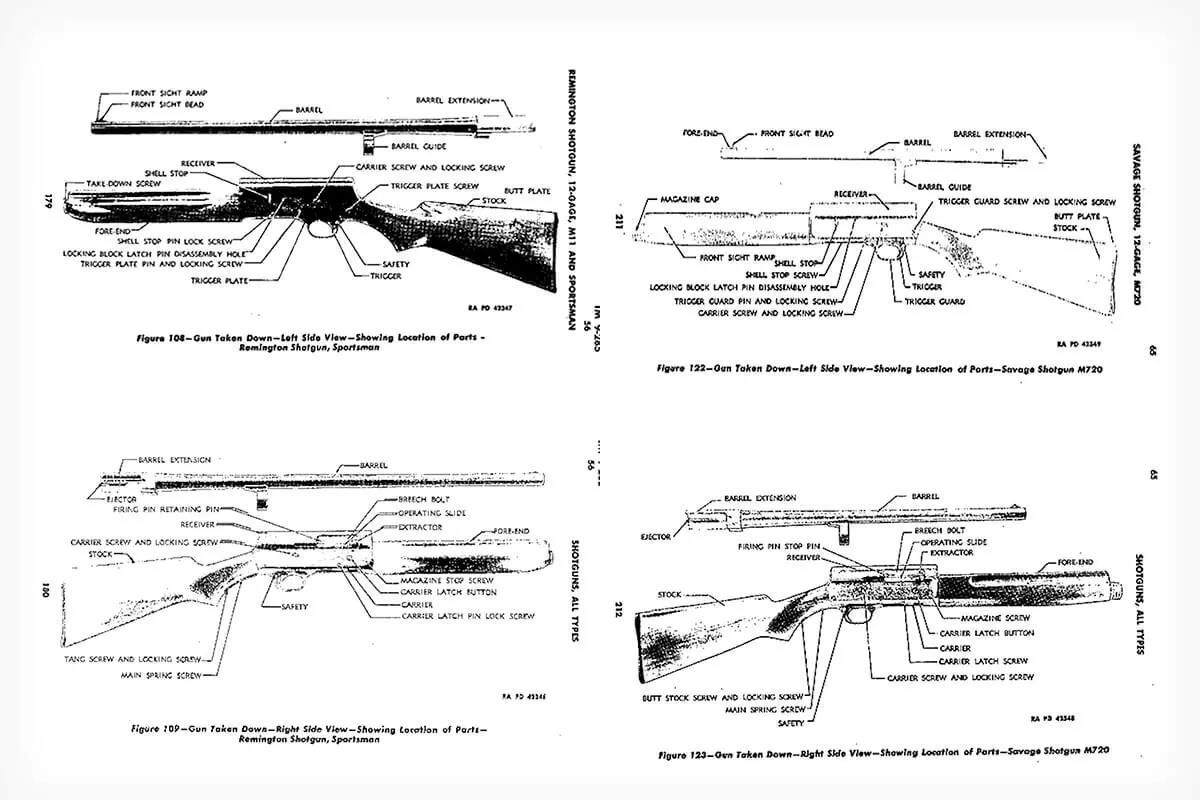
According to Canfield, the US Government acquired 60,006 Remington Model 11 shotguns between 1940 and 1944. Canfield also estimates that 27,565 of these were probably the Remington Sportsman, which only had a two-round magazine capacity instead of the four-round capacity of the Model 11. There were also slight cosmetic differences. The Savage Model 720 shotgun was similar in design to the Model 11, as well. Reportedly, around 14,500 Model 720 riot and aerial gunnery Model 720s were acquired. Exact figures on the number of each type acquired are not available, but Canfield notes that Remington fitted approximately 5,000 long barrel Model 11 and Sportsman shotguns with Cutts Compensators for use in aerial gunnery training.
Advertisement

The military Remington Model 11 riot gun was blued, with early examples still having engraved game scenes on the receiver, though these were left off later production guns. Later, a brushed blue replaced the commercial type of blue used on early receivers. These later shotguns were marked “MILITARY FINISH” on the left side of the receiver. Military markings were usually an ordnance bomb and “U.S.” on the upper left side of the receiver and on top of the barrel. Earlier stocks were checkered and varnished as were the forearms, while later ones had plain, oil finished wood stocks and forearms without a groove for grasping. Early stocks were stamped with just crossed cannons, while later ones also had the letters “FJA” indicating inspection by Col. Frank J. Atwood. The stocks had plain plastic butt plates. Model 11 riot guns had 20-inch barrels with a bead front sight. Barrels were stamped on the left side “CYL” indicating a cylinder bore choke, typical for riot shotguns.

The Remington Sportsman riot gun is very similar to the Model 11 riot gun. The primary difference is the magazine, which holds two less rounds. Though the forearm of the Sportsman is as long as that of the Model 11, it is of a different shape. One other noticeable difference is that “Sportsman” is visible on the bolt.

Though the Savage 720 resembles the Model 11 and the Sportsman, there are some notable differences. For me, the most important is the bead, which is on a ramp that I find much easier to acquire quickly. As with the Remington Model 11 and Sportsman, earlier M720 riot guns will have engraved game scenes on the receiver and a blued finish while later production shotguns will have a plain receiver and a brushed blue finish. Once again as with the Remington riot guns, the Savage 720 initially used up the checkered and varnished stocks and forearms on hand, later eliminating the checkering. Savage 720 riot guns were marked with a flaming bomb, “U.S.”, and “P” on the left side of the receiver and a small flaming bomb and “P” on the left side of the barrel. Also, on the left side of the barrel are a series of asterisks designating the type of choke. Three asterisks designate a cylinder bore barrel. Authentic WWII Savage 720 military riot guns are substantially harder to find than the Remington Model 11 or Sportsman, and bring a higher price. Because of this, care must be taken that an aerial training 720 is not being passed off as a riot gun. One tipoff is that the aerial training guns had an improved cylinder choke indicated by four asterisks.
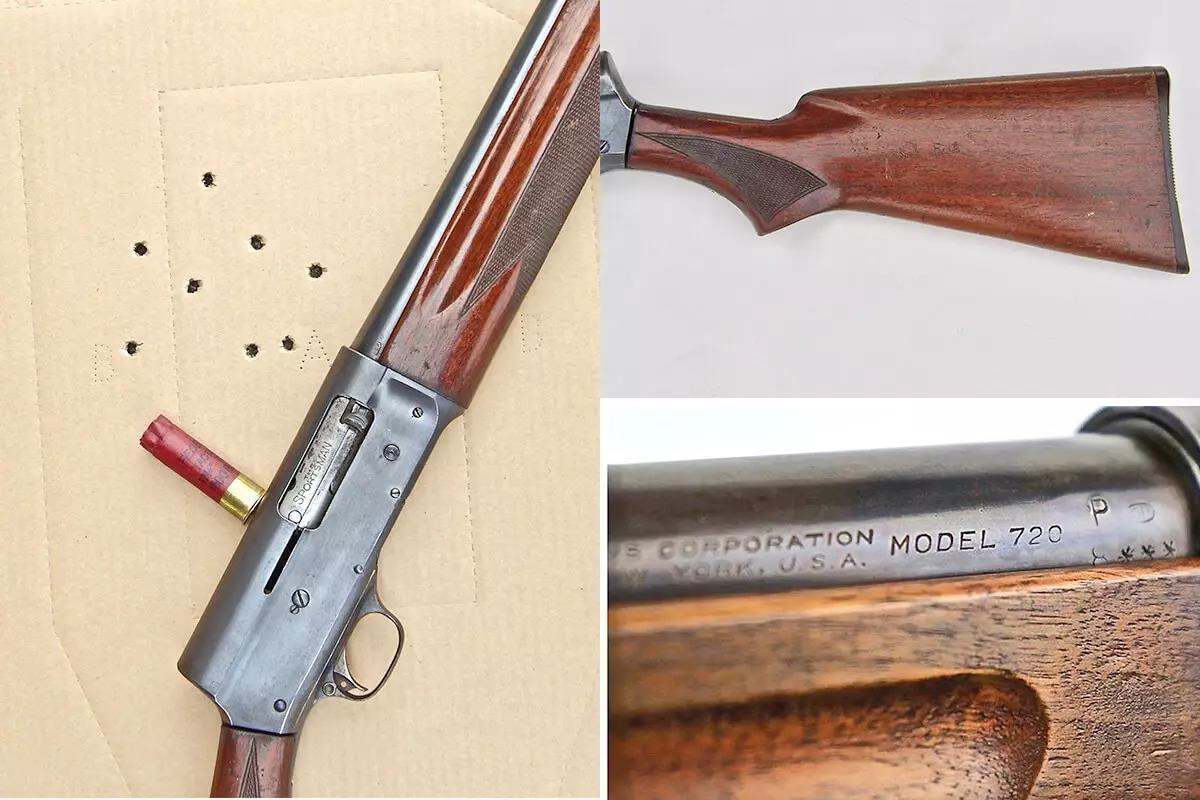
I’ve been interested in GI trench and riot guns since I bought a much-used Winchester Model 97 Trench Gun about 50 years ago. Since then, whenever I’ve had a chance to purchase an authentic WWI or WWII Trench Gun at what I considered a good price I’ve bought it. I’d always been primarily interested in the classic pump action trench guns, but at a Rock Island Auction ten years or so ago I bid on a lot consisting of a Remington Model 11 and a Remington Sportsman WWII riot gun. I got the pair for $1,265 including buyer’s premium. They were in nice condition and all authentic. They went into the safe, until I decided to do this article. I felt I had to shoot at least one of them for the article. The Sportsman was at the front of the safe so that was the one I grabbed.

I think I fired a few rounds through a Model 11 riot gun years ago when shooting with a WWII re-enactor friend, but I’m not positive. In effect, though, I was firing one of the Remington self-loading riot guns for the first time. While handling it to reacquaint myself with its features, I found it light and handy. The cross-bolt safety was small but easy to operate, and the bolt release button was easily operated with the trigger finger. The bottom magazine feed was typical of most other combat shotguns I’ve owned or fired, and I’ve practiced doing quick reloads by feel, so that was no problem. Pulling back the bolt was a little stiff because the shotgun hadn’t been oiled since I’ve had it, but a few drops of gun oil helped with that. I still prefer the cocking handle on my Remington 11-87 Police, though.
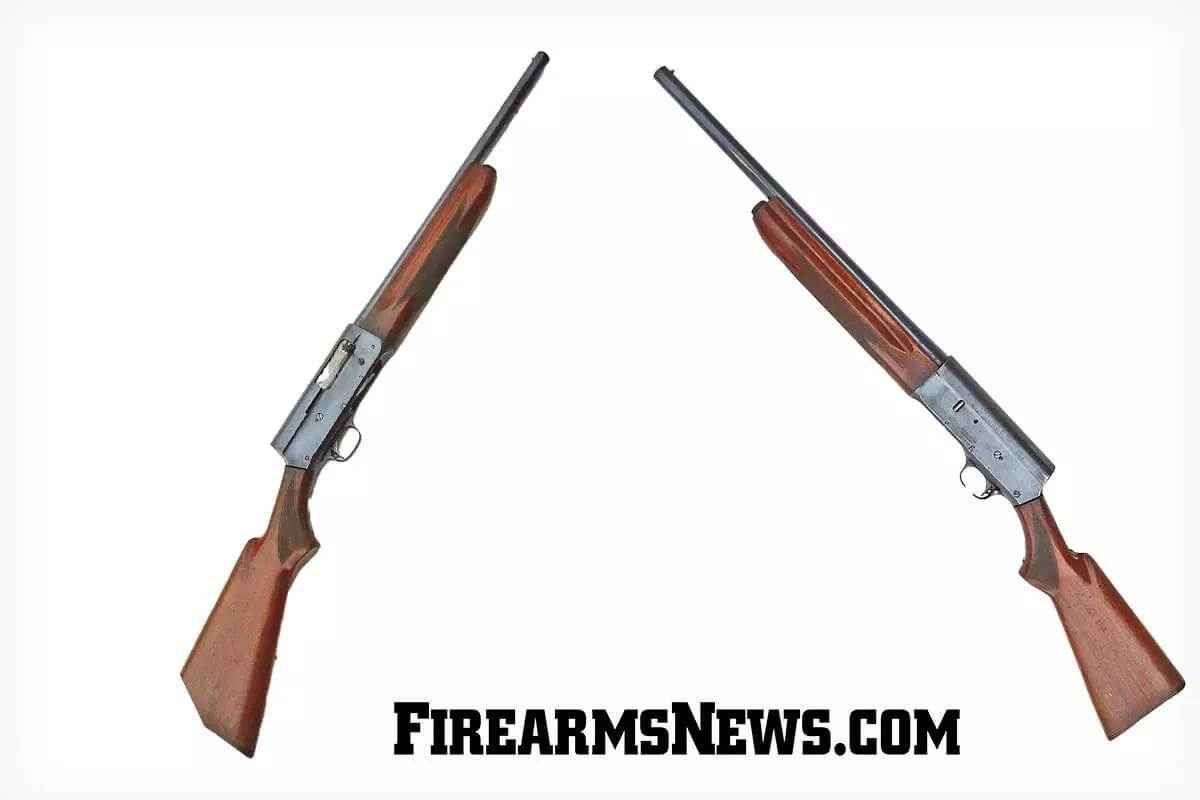
I fired a total of 10 rounds through the Sportsman, two for pattern and the rest for handling on plates and pepper poppers. One thing I noticed immediately was that I had more muzzle flip with the Sportsman than with pump action trench or riot guns or with my 11-87 Police. I think the slimmer gripping surface on the “action slide handle” on the pump shotguns gave me a better gripping surface. Other than having to haul the barrel back onto target, I could fire the Sportsman quickly. There were no malfunctions among the 10 rounds I fired. I used Federal Tactical Buckshot for the pattern testing. As I have found that the 000 Buck load is usually especially tight with these loads, I used it at 15 yards and 00 Buck Tactical Buck at 25 yards. See the chart for pattern sizes.
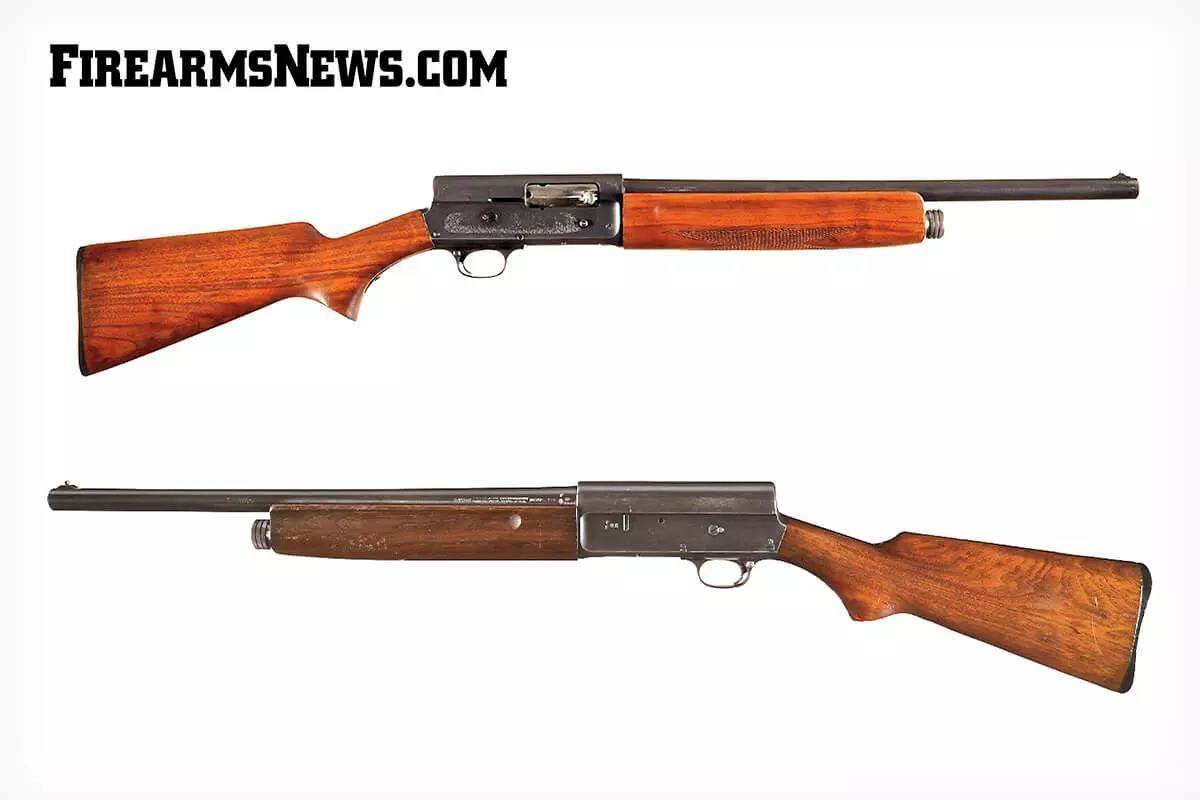
If facing the need for a tactical shotgun with which to “go to war” today, I would certainly choose my Remington 11-87P Tactical or Scattergun Technologies 870. However, today is 2022, not 1942. In WWII, my first choice would have been a Winchester Model 12 Trench Gun. But for guarding U.S. beaches, defense installations, or prisons, the self-loading riot guns from Remington and Savage would have been fearsome weapons—especially to those on the wrong end of it!
Video That May Interest You